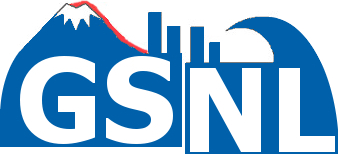The EVER-EST project 2016-2018
EVER-EST (acronim for European Virtual Environment for Research – Earth Science Themes) is an H2020 project whose main objective is to develop a Virtual Research Environment (also called Science Gateway or Virtual Laboratory) to support the Earth Science community.
The EVER-EST collaborative platform has been developed following the requirements set by four different research communities. The needs of the Geohazard Supersite community were identified by INGV, which is main partner of the project. INGV, the University of Iceland and the Iceland Meteorological Office will demonstrate the platform capacities during the last year of the project (2018).
Other Supersites communities will be encouraged to use the platform during the demonstration phase.
Why a collaborative platform
The general expectation of the Geohazard Supersite community from a Virtual Research Environment such as EVER-EST is to be provided a series of tools and services able to improve collaboration and make the scientist’s work more effective.
The EVER-EST VRE architecture has been built to satisfy the following general requirements of our community:
- COLLABORATION the Supersite scientists should be able to collaborate with colleagues located in different parts of the world, in a simple and effective way. This means to be able to remotely access and share data, research results, ideas, to carry out training sessions and discussions, to compare different results and models, and to synthesize many different pieces of information in a single consensus product to be disseminated to end-users. EVER-EST has implemented a range of flexible services dedicated to facilitate collaborative work for scientists.
- ATTRIBUTION AND RECOGNITION One of the pillars of Open Science is the free sharing of data and research knowledge (literature, results, codes, etc.). For this to become a reality, it is essential to use efficient tools for proper attribution, as persistent identifiers for scientific work and personal identifiers for people. The Research Objects concept is being used in EVER-EST to ensure full and easy attribution and recognition of researchers’ work.
- IMPROVING RESEARCH CAPACITIES A further need of the Supersite scientists, especially in less developed countries, is the need to access computing resources and software codes for data processing and modeling, as well as tutoring for research data analysis and interpretation. The EVER-EST platform uses effective technological solutions to allow remote data processing, software sharing, and remote training.
- LONG TERM PRESERVATION AND RE-USE The concept of Permanent Supersite implies that the scientific community should be able to access, analyse and re-interpret past data and scientific results, which should thus be stored for a long time, maintaining all the metadata information for any later use. EVER-EST addresses the issue of long term data preservation and curation using the Research Object paradigm.
Learn more about the EVER-EST project from the EVER-EST website and access the VRE platform from the Tools menu.
The FUTUREVOLC project 2012-2015
FUTUREVOLC (A European volcanological supersite in Iceland: a monitoring system and network for the future) is a collaborative project funded by the Environment theme of the FP7 programme of the European Commission, addressing the topic “Long-term monitoring experiment in geologically active regions of Europe prone to natural hazards: the Supersite concept”. The project started 1 October 2012 and had a duration of 3.5 years.
An overview of the project and its results from the different workpackages can be found in a booklet prepared for a meeting of stakeholders of the FUTUREVOLC project held in Iceland on 5 November 2015. The booklet can be viewed here (pdf).
The MED-SUV project 2014-2016
MED-SUV (MEDiterranean SUpersite Volcanoes) is a collaborative project funded by the Environment theme of the FP7 programme of the European Commission, addressing the topic “Long-term monitoring experiment in geologically active regions of Europe prone to natural hazards: the Supersite concept”. The project started in 2014 and had a duration of 3 years. MED-SUV improved the capacity of the volcanological community to assess the volcanic hazards at the Campi Flegrei/Vesuvius and Mt. Etna Supersites, two of the largest European volcanoes. This was achieved by optimising and integrating existing and new monitoring systems, by a breakthrough in understanding volcanic processes and by increasing the effectiveness of the coordination between the scientific and end-user communities.
The MARSITE project 2012-2016
MARSITE (New Directions in Seismic Hazard assessment through Focused Earth Observation in the Marmara Supersite) is a collaborative project funded by the Environment theme of the FP7 programme of the European Commission, addressing the topic “Long-term monitoring experiment in geologically active regions of Europe prone to natural hazards: the Supersite concept”. The development of the MARsite project ensured the integration of data from land, sea and space in the Marmara sea region, and the use of these data for earth-science research was an effective tool for mitigating damage from future earthquakes. This has been achieved by monitoring the earthquake hazard through the ground-shaking and forecast maps, short- and long-term earthquake rate forecasting and time-dependent seismic hazard maps to make important risk-mitigation decisions regarding building design, insurance rates, land-use planning, and public-policy issues that need to balance safety and economic and social interests.


